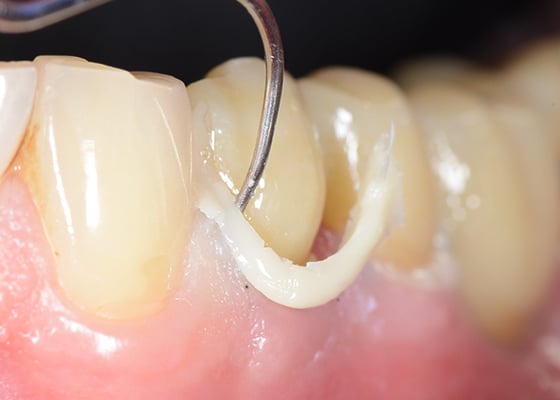Dental bonding cement is an essential material used in restorative dentistry to secure crowns, veneers, bridges, and other dental restorations. The advantages of dental bonding cement make it a preferred choice for both dental professionals and patients. Understanding these benefits helps explain why Dental Bonding Cementing plays such a vital role in ensuring the durability, function, and aesthetics of dental restorations.
Strong and Reliable Adhesion:
One of the primary advantages of dental bonding cement is its ability to provide strong and reliable adhesion between the restoration and the tooth. Whether you are getting a crown or a veneer, bonding cement ensures that the restoration stays in place for years, even under the pressure of daily chewing and biting.
Key benefits of strong adhesion:
- Durability: Bonding cement creates a long-lasting bond that ensures the restoration will remain securely attached.
- Resistance to wear: The strong adhesion minimizes the risk of the restoration loosening or falling off.
- Prevents shifting: The secure bond keeps the restoration properly positioned, avoiding any misalignment over time.
This strength ensures that restorations are functional and secure, helping to avoid the need for frequent repairs or replacements.
Aesthetic Integration with Natural Teeth:
Dental bonding cement is designed to blend seamlessly with the natural color and appearance of your teeth. This aesthetic advantage is especially important for visible restorations, such as veneers or crowns. The cement can be customized to match the shade of the surrounding teeth, ensuring that the restoration looks natural and enhances the overall smile.
Aesthetic advantages of bonding cement:
- Color matching: Bonding cements are available in a range of shades to closely match your natural tooth color.
- Translucency: Many bonding cements have a translucent quality that mimics the natural appearance of tooth enamel.
- Natural finish: After the cement is applied and cured, the restoration has a smooth, polished finish that looks like a natural tooth.
The result is a restoration that not only functions well but also blends effortlessly with the natural teeth, improving your smile's overall appearance.
Quick and Convenient Procedure:
The use of dental bonding cement in restorative procedures is also highly efficient, saving time for both the patient and the dentist. Many bonding cements can be applied and set in a single appointment, making the procedure more convenient and less invasive compared to other dental treatments.
Convenience of bonding cement:
- Single visit: Many restorations can be completed in one appointment, making it ideal for busy patients.
- Minimal discomfort: The procedure is generally comfortable and requires minimal adjustments afterward.
- Less waiting time: There is no need for multiple visits or temporary restorations, as the cement can be set and bonded during the same session.
This quick turnaround time allows patients to enjoy their newly restored teeth without having to wait for extended periods.
Versatility in Restorative Applications:
Dental bonding cement is versatile and can be used in a wide variety of restorative dental procedures. Whether it’s securing a porcelain veneer, a composite filling, or a metal crown, bonding cement ensures that different types of restorations are securely placed, providing both function and durability.
Versatile uses of bonding cement:
- Crowns and bridges: Provides a strong bond to both porcelain and metal restorations.
- Veneers: Secures porcelain or composite veneers, helping them fit seamlessly over natural teeth.
- Fillings: Helps secure composite fillings and ensures they stay in place over time.
This versatility makes bonding cement an essential material for a wide range of restorative dental treatments.
Resistance to Moisture and Temperature Changes:
One of the significant challenges in dental bonding is ensuring that the cement remains effective in the moist, variable environment of the mouth. Fortunately, dental bonding cement has excellent resistance to both moisture and temperature fluctuations, ensuring the restoration stays intact no matter what conditions your mouth is exposed to.
Advantages of resistance:
- Moisture resistance: Bonding cement maintains its strength even in the presence of saliva and moisture.
- Temperature stability: It can withstand the changes in temperature that occur from eating hot or cold foods and drinks without weakening.
- Durability over time: The material remains strong and stable, even with regular exposure to oral conditions.
These properties ensure that dental restorations stay in place and function optimally throughout the day.
Easy Maintenance and Longevity:
Dental Bonding Cementing Treatment is also known for its long-lasting durability and ease of maintenance. Once the restoration is securely bonded, there is little required to keep the cement functioning well. Regular brushing, flossing, and dental check-ups will help maintain the strength and appearance of the restoration.
Maintenance and longevity benefits:
- Low-maintenance: Bonding cement requires minimal maintenance, with most restorations lasting for many years with proper care.
- No frequent adjustments: Unlike some other materials, dental bonding cement doesn’t require constant adjustments or reapplication.
- Long-lasting results: When used correctly, the bond created by dental cement lasts for years, reducing the need for replacements.
With proper care, dental restorations secured with bonding cement can continue to function and look great for many years.
Conclusion:
Dental bonding cement offers numerous advantages that make it an essential component in modern restorative dentistry. From its strong adhesion and aesthetic appeal to its versatility and durability, bonding cement provides reliable, long-lasting solutions for a wide range of dental restorations. Its resistance to moisture, ease of use, and minimal maintenance requirements further contribute to its popularity. By understanding these benefits, patients can appreciate why dental bonding cement is the preferred choice for securing their dental restorations.

